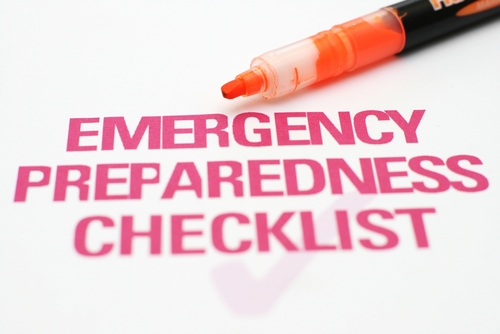How proactive is your company about planning ahead for emergencies and about training employees on related procedures? If yours is like other companies in a recent survey reported on in today’s Advisor, it probably needs to improve its approach.

Only 31 percent of surveyed adult employees in the United States indicated that their workplace is proactive about emergency preparedness, according to an online survey commissioned by Cintas Corporation (www.cintas.com) and conducted by Harris Interactive® (www.harrisinteractive.com).
“Since many employed adults spend the majority of their waking hours in the workplace, organizations need to be prepared to handle injuries, health emergencies, or inclement weather with both proactive and reactive solutions,” said Jamie Samide, senior director of marketing for Cintas.
“However, our survey highlights a gaping hole in organizational preparedness.” Proactive measures, such as training and emergency response plans, help ensure ongoing safety. However, surveyed employees reported significant deficiencies in these areas.
Specifically:
- 76 percent said their workplace has not conducted emergency drills in preparation for weather-related disasters;
- Only 18 percent reported that their employer has provided training about medical emergencies, such as diabetic attacks, strokes, and choking;
- 43 percent indicated that their employer has an established emergency response plan; and
- A mere 19 percent reported that their workplace has asked employees to be part of an emergency response team.
Great news! BLR’s renowned Safety.BLR.com® website now has even more time-saving features. Take our no-cost site tour! Or better yet, try it at no cost or obligation for a full 2 weeks.
While many employees were able to point to the presence of proper reactive solutions, such as first-aid cabinets, they also said their employers do not follow up with related employee education and regular maintenance of such items. For example, 94 percent of survey respondents confirmed that their workplace has a dedicated first-aid kit or cabinet on-site. However, 51 percent of them do not know where the kit or cabinet is located, and 58 percent report that the kit or cabinet is not kept stocked with necessary items.
Implications of Survey for Trainers
First, do not make assumptions. Having a first-aid kit on-site is a great first step, but the kit will not be of any use if employees do not know where it is located or if it is not stocked. During training, tell employees where they can find first-aid supplies. Also, find out who is responsible for replenishing supplies in the kit or cabinet.
Second, conduct drills. This is an important part of emergency preparedness training. After training managers and other employees on your company’s emergency response plan, conduct drills to help ensure that they will know what to do if a natural disaster strikes or other emergency occurs.
Your one-stop safety management resource, available 24/7. Go here to take a no-cost site tour or here to try it in your own office!
Why It Matters
- No one likes to think an emergency will happen on the job, but if knowledge is power, it’s also protection, in that preparing for the possibility of an emergency may actually make the experience less dangerous with fewer
- So be realistic about the possibilities for emergencies in your workplace by training employees on what to do should specific emergencies occur.
- Include drills in your training on a regular basis so employees can use kinetic learning to know where to go in an emergency, whether to get emergency equipment or to evacuate the building or to go to a designated shelter in place area.
